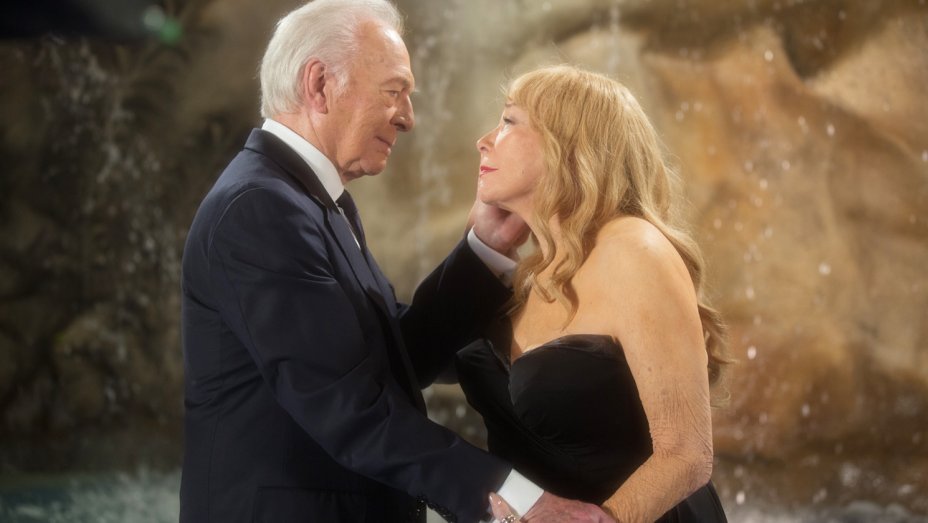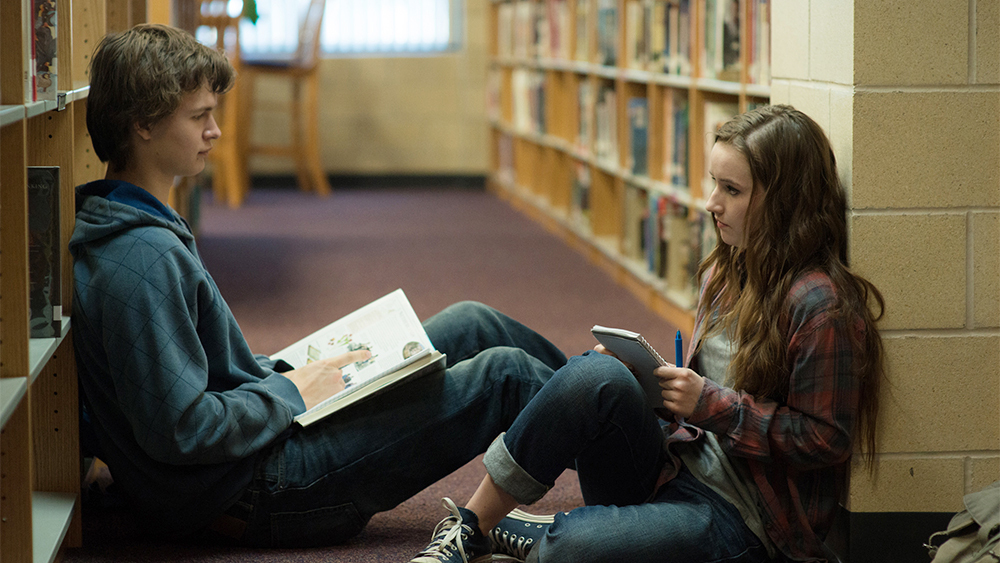Online game developer Jeff Kinney had an idea for a comic strip, but nobody like the concept. No matter. He just took the material and created Diary of a Wimpy Kid, a junior-high memoir of sorts that was inspired by his Maryland adolescence. What helped make it a best seller was the same thing that made it jump out from the shelves of bookstore sameness: the crudely drawn illustrations that popped up on almost every page. Those crude doodles made the humor even funnier for a target audience that thought the whole package so fall-down funny that Kinney followed up with Diary of a Wimpy Kid: Rodrick Rules, Diary of a Wimpy Kid Do-It-Yourself Book, Diary of a Wimpy Kid: The Last Straw, and Diary of a Wimpy Kid: Dog Days.
Then Hollywood got involved, and that meant taking loose narrative and trying to tighten it up and stretch it to fill the space of a full-length feature. Structurally, this film by Thor Freudenthal (“Mind the Gap,” “Hotel for Dogs”) has much in common with the film version of Jean Shepherd’s childhood memoir, In God We Trust: All Others Pay Cash, better known as “A Christmas Story.” Just as the Red Ryder BB gun that Ralphie wants for Christmas becomes the unifying motif for a collection of otherwise unrelated childhood episodes, “Diary of a Wimpy Kid” depends upon young Greg’s desire to somehow be voted class something and appear in the yearbook the way that his brother did.
But when you take away the doodles, you take away some of the crude charm that the books offered, and when you stretch the narrative you also water down the jokes that played more like one-liners on the pages. Simply put, the film version isn’t nearly as funny as the books. And I have that from an authority on junior high: my 12-year-old son, who owns every one of Kinney’s books.
Still, it’s a PG-rated family movie, and that genre seems to be shrinking on a daily basis. There are also some positives here. Zachary Gordon is highly likeable as the young hero trying to survive his middle-school experience. If T.S. Eliot had written this instead of Kinney, he’d probably have begun, “Middle school is the cruelest. Period.” Poor Greg has a first day that his chubby and immature best friend Rowley (Robert Capron) cheerfully pronounces worse than Greg’s bullying older brother (Devon Bostick) had predicted. Bob Newhart once described his “Bob Newhart Show” as a sitcom in which he plays the only sane man in a crazy world, and that’s the way Greg feels and thinks. It’s also the way that Freudenthal plays it, with even the parents a little more clueless, clichéd, and slightly exaggerated. In fairness, I found myself laughing at several places, but there were plenty of dry spells.
It all comes down to humor, and the drawn idea of someone having to sit on the cafeteria floor because no one will let him sit by them is funnier than a drawn-out scene of it. That’s true of pretty much every episode in this episodic film, which, compared to films like “A Christmas Story” or even “The Sandlot,” seems less energetic, less consistently funny, and less populated by memorable characters or scenes.
A few stand out, as when Greg, a fan of pro wrestling, decides he might make the yearbook as a wrestler and is shocked at the silly outfits the wrestlers have to wear, then stunned when the shortest, wimpiest, geekiest kid in middle school–the only one short enough and light enough to partner with Greg–turns into a raging animal on the mat and slams him right and left. Yep. Middle school sucks, and every episode is designed to show that. Where the film does this most effectively is in the subtler assessments, as when we see girls that look old enough to be in high school alongside boys who look as if they’re still in grade school. Actress Chloe Moretz, who plays the girl that Greg likes, is only a year older than Gordon, but she looks old enough to be his babysitter–which is what I remarked when my wife and I attended a junior high awards ceremony and a gargantuan female turned up in line next to the shortest boy in class. It’s these moments of truth that turn out to be the funniest. Unfortunately, it wasn’t enough for my 12-year-old son or eight-year-old daughter. Me neither. As my son says, “The books were a lot better.”
Video:
“Diary of a Wimpy Kid” was transferred to a 50GB disc using AVC/MPEG-4 technology (35mbps) and it looks great in 1080p. There’s a nice sense of 3-dimensionality and bright, bold colors throughout. Skin tones look natural, edges are clean, and black levels are crisp. Some scenes have a little atmospheric haze to them, but overall it’s a nice-looking picture.
Audio:
The featured Blu-ray audio is an English DTS-HD MA 5.1, with additional audio options in Spanish and French Dolby Digital 5.1 and subtitles in English SDH, Spanish, Portuguese, Cantonese, and Mandarin.
Extras:
The “Cheesiest Edition” is a Blu-ray combo pack that includes DVD and Digital Copy in a blue jewel case that’s slipped inside a cardboard case that incorporates a four-page board book of Kinney’s drawings and notes.
Though the commentary track isn’t for kids, it’s actually funnier, I thought, than the film itself. The director and writer Gabe Sachs are a couple of cut-ups who do a good job of discussing the fiction-to-film challenges and blending anecdotes with filmmaker details.
Other than that, there’s not much here. You’d think there’d be something for kids, like maybe a green cheese game, but nope. There are just around nine minutes of deleted scenes, the theatrical trailer, trailers for other Fox films, and a “how to” for the digital copy. And for Blu-ray exclusives there’s “And Now a Word from Our Author,” in which Gordon and Capron interview each other. Not bad, but it’s less than four minutes long.
Bottom Line:
The books seem to speak more to adolescents and ‘tweens than this film, and “Diary of a Wimpy Kid” also doesn’t have the same broad family appeal.


